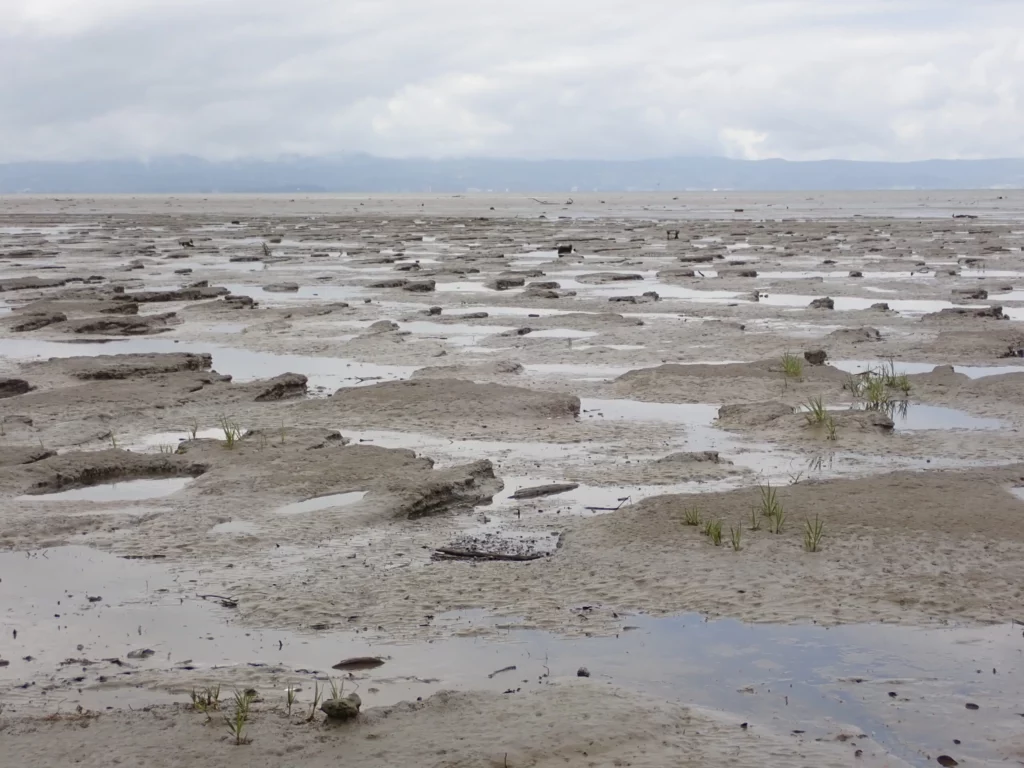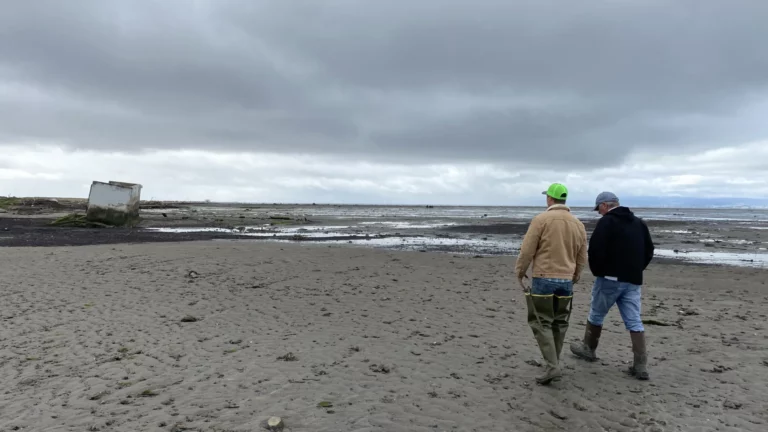Photo: Mario Accordino, ESA.
The shore remained elusive on the drizzly May morning as a crack technical team of expert engineers and scientists assembled near one of the oldest and biggest sandspits in the South Bay. Local cities had sounded the alarm last year when tides overwhelmed the sandspit and left a gaping breach.
The team, at least half a dozen, began rolling into the gloomy parking lot at 9 am, opening their trunks, shaking hands, and pulling out rubber boots — accustomed as they were to traipsing through the soggy, marshy, oozy bits of the bayshore.
The line between tactical and technical team blurred in the mist, they were here not on some Kevlar-clad SWAT mission of extraction but on a rescue mission nonetheless, made more urgent by the steady rise of sea level. Assembled by the City of San Leandro and the SF Bay Restoration Authority to come up with a plan to save the eroding landscape, some that day were new to the job and some so seasoned that as soon as the mist cleared they saw something much more alarming than the sandspit breach.

“We’re all looking at the mudflats that go out for close to a mile and the rows of sandbars, there used be 15-20 of them, were just gone,” says Peter Baye, an ecologist joined that day by colleagues in the field from the SF Estuary Institute, the environmental consulting group ESA, UC Davis, and the City of San Leandro. “With most of the shore from Oakland to San Leandro armored, the loss of those bars tells me there isn’t much hope for natural resupply to the spit.”
As the bay level rises, sand and other beach-building materials, ranging in size from grains and specks to gravel and cobbles, are now more precious than ever. These natural elevators feature in many of the latest shoreline protection designs materializing on digital screens for eroding areas. Whether it’s a degraded salt marsh in downtown San Rafael, a sliver of wetlands near the old San Francisco shipyards, or the breached sandspit called Long Beach at San Leandro’s Robert’s Landing, the region’s obsession with beaches as buffers against waves and rising seas is playing out on projects large and small around the Bay.
Paired with moveable materials in the designs is often a muscular, bright green shrub called Suaeda, which holds the sand in place. Many projects also include barriers or groins to hold or direct the sand and sediment, and/or a stretch of a new kind of levee. These “ecotone” or “setback” levees are built farther back from the water’s edge than your average dike, and slope more gently to allow more space for habitat and floodwaters. Putting all these pieces in the adaptation toolbox to work on small properties at the hearts of local towns is usually complicated, but the region is making progress.
For Baye, closing the breach on the 1000-foot-long sandspit it not necessarily an ecological priority. The sand that used to make bars on the mudflat and feed Long Beach wasn’t likely there naturally — it was probably a result of historic urban development and fill. “We don’t really have the option of keeping these inherited legacy shorelines from the 19th century or the post-war levee-building boom exactly in their current alignments,” he says. “We have to expect some retreat.”
Such expectations are clear in a series of reports from the “New Life for Eroding Shores” project, led by San Francisco State University’s Estuary & Ocean Science Center. These reports, written by a technical team that includes many sources in this story, confront the increase in erosion around the Bay and the prospect of sea level rise, and then lays out the scientific and engineering basis for what to do about it. One thing they emphasize is allowing for dynamic change.
“Change is normal for coasts.” says the State Coastal Conservancy’s Marilyn Latta. “We can harness the buffering capacity of natural habitats and the many green infrastructure functions they provide as we plan for a more dynamic future, and collectively test and learn what methods will work best in different conditions and locations.” The Conservancy and the region’s Restoration Authority, both tapping taxpayer dollars, are footing the bill for […]
Full article: www.kneedeeptimes.org

